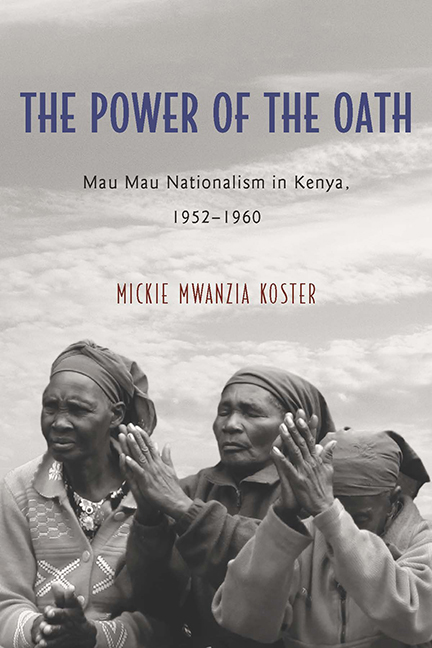Summary
Are we still in the forest fighting?
—Ogutu MurayaOn July 10, 2011, the Nairobi-based community theater questioned the state of Kenya's postcolonial progress in a dramatic musical about two Mau Mau fighters still living in the forest and fighting for freedom. The play, Are We Here Yet?, reveals the fighters’ struggles, oaths taken, aspirations, fears, and past actions. Many Kenyan people question their Mau Mau history, uhuru shortcomings, and their future. In many ways, we are all still waiting and fighting in the forest for Mau Mau promises of freedom. Nelson Mandela states that “After climbing a great hill, one only finds that there are many more hills to climb.” Similar to the many hills noted by Mandela, the play and this study reveal that we are still climbing and working through the complexity of Mau Mau legacies, uncertainties, and dreams. Those who took the Mau Mau oath despite their circumstances found themselves thrown into a movement of collective virtue and honor.
The Power of the Oath reveals a Mau Mau movement that was by far more inclusive, spiritual, and meaningful than it appeared on the surface. Mau Mau nationalism must be understood in a way that considers how and why different groups like the Kamba united and joined Mau Mau. Oathing provides a glimpse into this complexity. The Mau Mau war is an example of a time in which the desire for freedom required Africans to tap into the spiritual world for power, in the form of the oath, to resist and to create a new reality. The British were using their power to suppress African freedom in Kenya; old structures and systems were redirected to support colonial economic, political, social, and religious interests that reorganized and suppressed Kenyan traditions. These colonial sources went beyond military weaponry and included shaping the discussions of Mau Mau as a violent, evil, and barbaric revolt. But power must be fought with power, and the key is to uproot, mobilize, and manifest it. The Mau Mau oath was a part of a very powerful oathing system in Kenya that was reconstituted to fight an inevitable war.
- Type
- Chapter
- Information
- The Power of the OathMau Mau Nationalism in Kenya, 1952–1960, pp. 151 - 156Publisher: Boydell & BrewerPrint publication year: 2016



